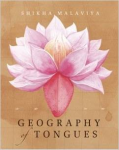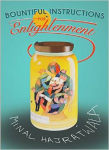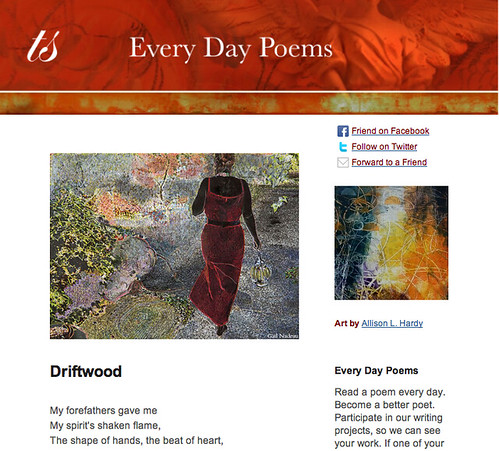Quick question: what do you know about poetry and poets from India?
My own quick answer: Not much. My reading and understanding of poetry is generally limited to Western culture – poets writing in English, primarily, or translations of French, Italian, Russian, and Spanish writers – all still within the Western / Western European cultural context. My experience with Asian poets has been limited to a few Japanese and Chinese writers, mostly pre-20th century.
I suspect I’m not alone. I suspect I’m the kind of reader that is one of the targets of a new publishing venture, The Great Indian Poetry Collective.
Poet Shikha Malaviya describes herself as “a morpher” – born in the United Kingdom and raised in the United States and India. It is perhaps that “morphing” that has led her to create a literary initiative called The Great Indian Poetry Collective, a not-for-profit literary publisher specializing in new poetry from India.
Two of the volumes published by the project are Geography of Tongues by Malaviya and Bountiful Instructions for Enlightenment by Minal Hajratwala. A brief look at both collections provides some insight into the project and its goals.
The poems of Geography of Tongues cover familiar topics – family, love, memory, aging, writing, nationality – but in a very Indian context. We find banyan trees and monsoons, Hindu temples, and mangoes. But we also find the universal themes of all poets, suggesting that the poetic imagination, and the creative imagination, is not limited to any region or nationality but is indeed global.
One of the poems in Geography of Tongues is about Malaviya’s grandfather. Watch how she describes him – and how familiar he becomes in the process.
Dadaji

and flows each day we live away from it
a tale swimming in our minds
of young youth
stealing on a ship to England, dreams suited
and topped with a fedora
giddy with Yeats and Eliot at Leeds
where Dadaji led his inquiry of literature
Yes, Dadaji was fond of gazing in the mirror
and into the world, that’s why he wrote poetry
I know I get it from him, even if my lingua isn’t his lingua
inclinations running deeper
than the Ganges and the Thames
And he died
before I could ask him
how he knew
Dadi was the one
the first time he saw her
standing near the staircase
he died
before I could figure out
why he was larger than life
even though he was only five feet eight inches
he died
before he could teach me his magic
pulling candy out of thin air
after I’d checked all his pockets
In Malaviya’s hands, Dadaji becomes the big brother, the favored uncle, the friendly older man who makes candy magically appear for children. We instantly recognize the friendly, playful character.
Hajratwala’s Bountiful Instructions for Enlightenment is more experimental, including a number of prose poems, use of unorthodox form and structure, and a short play in poetic form. But like Geography of Tongues, many of the poems are both distinctly Indian and broadly recognizable, although several of them are less national and more familiar as contemporary poetry, like this poem, entitled “Abode.”
In the House of Love, save
the best rooms for Rage.
Give it the softest
warmest blankets,
sweet endless light of the plains,
a stack of dishes to break.
Tell it to make itself at home.
It will anyway. Let it roam
through the dungeons where Compassion
wrestles Suffering into chains. Let it mess up
the kitchen where Sympathetic Joy
whips up confections & spaghettis
for all beings. Let it piss
in the pot that Equanimity & Generosity
disinfect daily on their knees.
Let it whirl through the study
ruffling the rondos
Lovingkindness composes each dawn.
Notice me, it wails. Notice
where it tells the truth. When it lies.
Honor it like a divine guest
or your beloved, soft-hearted child,
the one who will not let you rest
until you have made room in your house
for one more stray cat,
one more bastard child or thought
unwanted
with nowhere else to take refuge.
The collection includes more specifically Indian poems, but the point is the Indian poetry is part of the mainstream of contemporary poetry. The poems in both collections have a national cultural richness, and yet they ask to be judged not as Indian poetry but simply as poetry. I’m looking forward to what The Great Indian Poetry Collective publishes next.
Related: In 2013, Shikha Malaviya spoke on “The Poetry of Life” at Tedx Bangalore.
Browse an Indian poetry form: ghazal poetry
Photo by yLev, Creative Commons, via Flickr. Post by Glynn Young, author of the novels Dancing Priest and A Light Shining, and Poetry at Work.
Want to brighten your morning coffee?
Subscribe to Every Day Poems and find some beauty in your inbox.
- “Your Accent! You Can’t Be from New Orleans!” - October 9, 2025
- Poets and Poems: Donna Vorreyer and “Unrivered” - October 7, 2025
- Poet Sidney Lanier and the Lost Cause - October 2, 2025


Sandra Heska King says
I love these poems you shared here, especially the last one. And I keep coming back to this line… “where Compassion wrestles Suffering into chains.”
Shirani says
Interesting. Shikha was spot on when she said we are taught to read the dead poets but are at most times not informed about why the poet wrote it or what life was like when he wrote it. That’s exactly why people tend to say they don’t understand poetry. They are not sensitized to appreciate it.